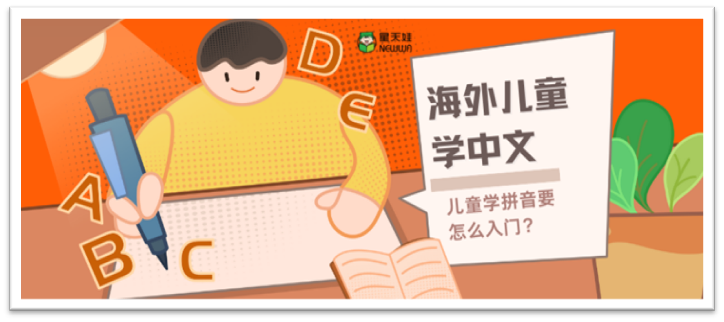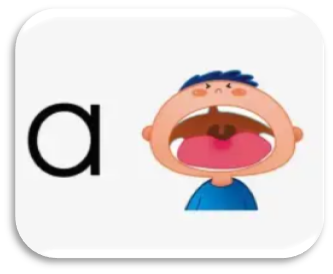Pinyin is now the first hurdle that both children and adults must face in the learning of beginners of Chinese pinyin in Singapore. Here are some key points on how to get started with children learning Pinyin.
How long does it take for children to learn Pinyin?
There are currently several mainstream approaches to how long it takes children to get started: 1. One week; 2. One month; 3. One semester.
Firstly, a one week introduction is feasible, but it is also limited to basic introductions. According to the current mainstream teaching, children can learn up to six simple final and tones, plus some simple initials, within a week.
If it weren’t for hoping that children’s Chinese learning would only stay at the basic level, such an “entry-level” approach would obviously not be enough.
What about that month? If the rhythm is relatively fast, it should be able to complete most of the vowels, but children cannot fully grasp these pinyin in such a short period of time.
Moreover, Pinyin is not independent of other studies of Chinese. How do children get started learning Pinyin? How long will it take? There is only one answer, which is that it will take nearly a semester to truly get started with Pinyin.
In fact, it takes children in China so long to master Pinyin in primary school. However, this does not mean that learning Pinyin alone requires such a long time. We will analyze this in detail in the following text.
Can children only learn Pinyin? Some parents want to know if their children can only learn Pinyin. The answer is no.
Pinyin in Chinese is like phonetic symbols in English, playing a role in assisting pronunciation and correction. Meanwhile, Pinyin cannot replace the use of Chinese.
Some children studying Chinese in China may feel lazy after learning Pinyin. They will use pinyin to replace the writing of unfamiliar or cumbersome characters.
Needless to say, this naturally leads them to lag behind other children in learning Chinese characters. Moreover, when reading, one only looks at pinyin and becomes illiterate when receiving articles without pinyin.
For some adults, their demands are limited to typing. Just learning Pinyin may be enough, and you don’t even have to worry about tone. For children who hope to learn Chinese well, this is obviously not enough. How do children get started learning Pinyin? Obviously, we cannot just learn Pinyin.

Can children learn Chinese without learning Pinyin?
Is it necessary for beginners of Chinese pinyin in Singapore when learning pinyin? If there were teachers in previous private schools who taught reading and correcting pronunciation, even without the concept of pinyin, it would not affect children’s learning of Chinese pronunciation.
The mainstream teaching nowadays generally prioritizes pinyin teaching. Some schools have also improved their teaching processes by not teaching Pinyin in the first month, but allowing children to recognize and read some simple Chinese characters, and gradually using the pronunciation of these characters to bring out Pinyin.
Of course, with a large input of Chinese, one may still be able to learn Chinese well without learning Pinyin. The Cambodian boy who became popular online a few years ago is an example.
This popular boy on the internet has mastered multiple languages at a young age, but his job is only to sell souvenirs to foreign tourists. Under the immersion of multiple languages, he acquired nine languages, including Chinese.
Such examples have also appeared in other languages. Legend has it that Liang Qichao learned Japanese in just one night. Some people may think that Japanese and Chinese have much in common. This statement is true, but it also provides the feasibility of learning a language without studying phonetics.
How do children get started learning Pinyin? The order and method are important.
To learn Pinyin, first learn six simple final. Among them, in terms of pronunciation from a to o, just turn the lips from round to flat. You just need to retract your tongue a little bit from o to e. The other three simple final can also be read through one or two small changes.

Of course, imitating sounds from life or animal calls can help children learn the pronunciation of these vowels more intuitively. For example, when a child wants to eat, they usually open their mouth and say “ah (a)”.
Next is the grouping of initial consonants, which is also learned based on the principle of simplicity before complexity. During this process, review the overall recognition and four tones at any time.
The next step is the most crucial – combining simple Chinese characters and incorporating the specific use of Pinyin in reading. Usually, under the persuasion of a large number of continuous pinyin, children will start to actively or subconsciously memorize character shapes and corresponding pinyin to save effort.
After another period of time, you will find that children can gradually recognize the pronunciation at the sight of the font shape.
Has Pinyin achieved success and retired at this stage? Of course not. Next, we can teach children to use pinyin retrieval to search for unfamiliar characters and words in a dictionary.
With the help of Pinyin, children can significantly improve their reading and literacy abilities, while also gradually starting to combine their own sentences. On the basis of such attempts, children’s oral English will make significant progress in the future.
The above are some methods for beginners of Chinese pinyin in Singapore to learn how to get started during the learning process. I believe that through them, you will have a deeper understanding of children’s learning of Chinese Pinyin, and can flexibly apply some methods to their learning of Pinyin, taking their Chinese learning to the next level.
